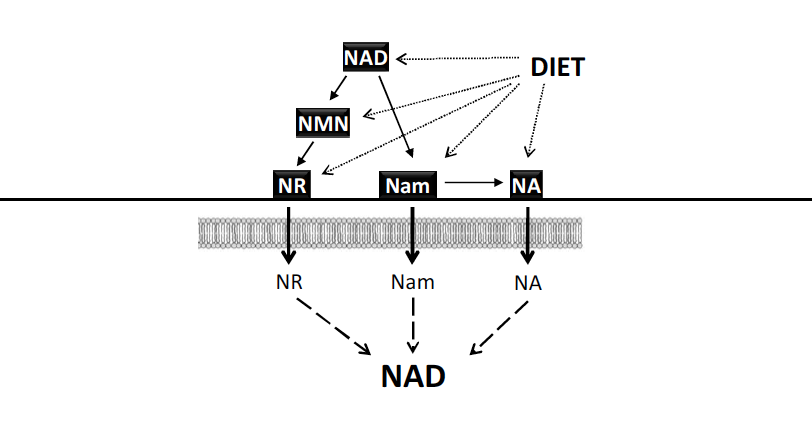Vitamin B3 is a class of vitamins that comes in three different forms–nicotinamide riboside (NR), niacin (NA), and nicotinamide (NAM)—that are naturally present in some foods, added to foods, and sold as supplements. The vitamin B3 family is involved in important chemical reactions that synthesize nicotinamide adenine dinucleotide (NAD+), a compound that aids enzymes in their vital functions. Interestingly, studies suggest that other related forms of vitamins (i.e., vitamers) for vitamin B3 at specific doses can elevate intracellular NAD+ concentrations and may assist in the treatment of metabolic and mitochondrial diseases.
In a study published in Food Chemistry, investigators for the first time calculated the amounts of vitamin B3 vitamers affecting NAD+ concentrations from various dairy species for the first time. To accomplish this, the investigators utilized a is rapid, sensitive, inexpensive, and amenable method to examine the conversion of vitamin B3 vitamers to NAD+. This approach is based on a fluorometric, enzyme-coupled assay, which detects the presence of a substance by measuring changes in fluorescence before and after a chemical reaction. “This analytical tool can be instrumental to select the most appropriate sources of the individual vitamers and to design better processing technologies to preserve their nutritional benefits,” said the investigators.
NAD+ is a critical coenzyme for a multitude of cellular processes and can be synthesized from various molecules. NR, the most recently identified form of vitamin B3, and nicotinamide mononucleotide (NMN) are powerful compounds that elevate intracellular NAD+ concentrations. Indeed, the stimulation of enzymes that rely on NAD+ can be boosted through increased NAD+ availability, which leads to the protection against age- and diet-induced metabolic abnormalities, according to animal research.

The dietary precursors for the synthesis of intracellular NAD.
Vitamin B3 forms can be found as such in the diet or they can be formed from dietary NAD through a combined action of enzymes of the intestinal mucosa and the gut microbiota. Abbreviations: NA, nicotinic acid; NR, nicotinamide riboside; Nam, nicotinamide; NMN, nicotinamide mononucleotide; NAD, nicotinamide adenine dinucleotide (Ummarino 2016 | Food Chem.).
For these reasons, scientists created a method derived from a fluorometric, enzyme-coupled assay capable of examining the amount of NAD+ and its dietary precursors in milk from various species. The investigators demonstrated that NR, NMN, and NAD+ were found in human and donkey milk but were distributed differently in buffalo, sheep, cow, and goat milk. In addition, results showed that human milk contained the most abundant source of NMN.
They noted that while the majority of the total vitamin B3 appeared to be represented by NAD+ in goat and sheep milk, NR and NMN may account for a large portion of the entire vitamin B3 content in buffalo, cow, and human milk. “To our knowledge, this is the first evidence on the presence in a nutritional source, as well as the first quantitative determination of NR and NMN in food,” said the authors.
The investigators looked at the impact of multiple heat treatments on cow milk content to determine NR bioavailability in processed foods. The data revealed that while NR was resistant to pasteurization, it was completely depleted after processing at ultra-high temperatures. “Our results indicate that NR does not resist [ultra-high temperature] treatment, therefore such process should be avoided in order to preserve the nutritional benefits of the vitamin,” said the authors.
Given the nutritional value of NR and NMN and the possible health benefits of dietary supplementation with dairy products, the dairy industry would likely be interested in a rapid, sensitive assay that targets these nutrients. In particular, this approach would allow for the assessment of individual vitamer content and the monitoring of stability during storage and processing.
According to the researchers, this data could be useful to small dairy companies who want to acquire NR content in their products from minor dairy species, thus giving them a competitive advantage. In addition, this approach might also be utilized to track NR concentrations in novel products designed to supplement the diet with a natural source of the vitamin; for example, probiotics chosen for their ability to secrete NR.